Do you feed babies fruit or vegetables first
How to Start Introducing Solid Foods to Babies
Introducing solids to your baby can be intimidating. With safety and nutrition top of mind, we’d like to help simplify the introduction process. Starting on solid foods allows babies to get accustomed to eating, establish a feeding routine, learn about textures and experience using utensils. Our guide will help you transition your baby during their first year of life as they explore the diversity of solid foods.
Ready to start solids?
Prior to introducing solids, make sure your baby is developmentally ready. Consider the following readiness cues and benchmarks. Is your baby:
- Holding their head up without assistance?
- Sitting up without assistance?
- Propping up on their elbows while lying on their tummy?
- No longer sticking out their tongue automatically when something is put in their mouth (also called the “extrusion reflex”)?
- At least 4 months old?
When you’ve answered yes to these questions, and you’ve discussed starting solids with your pediatrician, we recommend introducing single ingredient purees. Don’t be surprised if your little one only eats a spoonful or two, as it can take a few days or even weeks before they learn to eat off a spoon. As you introduce solids, it is also important to remember that up until 12 months, babies should receive most of their nutritional needs from breast milk, formula or a combination of both.
What foods should I start with my baby?
Since babies are naturally inclined to prefer sweeter foods, it’s important to introduce vegetables prior to fruit in order to increase acceptance of more savory flavors. Additionally, when your baby starts eating, try one new puree every 2–3 days so your baby can get used to the new tastes and you can monitor for any allergic reactions.
Help your little one embark on their food journey by following these guidelines for choosing which purees to introduce.
Orange vegetables firstWhen first introducing solids, start with orange vegetable purees, like butternut squash, yam, sweet potato or pumpkin. These offer a natural sweetness that tends to be easily accepted by babies. Increased acceptance can lead to an eager eater, so if your baby has a good first experience with foods, they’ll be more likely to try other purees later on.
These offer a natural sweetness that tends to be easily accepted by babies. Increased acceptance can lead to an eager eater, so if your baby has a good first experience with foods, they’ll be more likely to try other purees later on.
Once your baby accepts orange veggies, begin incorporating green veggie purees to their eating schedule while continuing to offer orange veggies. Green bean, pea and zucchini purees are a great place to start. These are slightly bitter in taste, which means your baby might need some help adjusting to these new flavors. If your baby is having difficulty accepting green veggies alone, try mixing in some of an orange veggie puree to add a little sweetness.
Finally…fruit!While your baby continues to enjoy orange and green veggies, slowly start introducing naturally sweet fruit. Fruit purees such as mango, apple, strawberry and pear are great single ingredient purees to start. Once your baby enjoys the sweetness of fruit, they may be less eager to enjoy veggies. Consider offering these less frequently or towards the end of the meal.
Consider offering these less frequently or towards the end of the meal.
Frequently asked questions about starting solids
1. Should I feed my baby rice cereal?In addition to fruits and vegetables, single iron-fortified grains like rice are a popular choice for first foods due to their bland taste, smooth texture and low allergen risk. Until they are about five to six months old, most babies have adequate iron stores acquired in-utero, so at six months, we recommend introducing foods that naturally contain dietary iron and pose a low allergy risk. Rather than traditional rice cereal, consider trying more fiber-filled, nutrient-dense grains or legumes such as buckwheat, millet, oatmeal, quinoa, beans or lentils.
2. What is the best way to introduce solids for the first time?When your baby is first starting solid food, it’s important to start mealtime when your baby is hungry and eager to eat. We recommend offering food before breast milk or formula is offered. Learn how to encourage interest in mealtime and exploration of new tastes in our full post on tips for introducing solids to your baby
Learn how to encourage interest in mealtime and exploration of new tastes in our full post on tips for introducing solids to your baby
We recommend starting with three meals per day, offering a few spoonfuls at each “meal” and progressing as your baby shows interest.
4. How can I prevent food allergies for my kid?According to the American Academy of Allergy Asthma & Immunology, allergists now recommend introducing certain foods as early as 4–6 months, which may reduce the potential of an allergen risk. Be sure to discuss introducing allergens with your pediatrician before starting solids. For more information on food allergies in children, check out our two part blog series with Dr. Steve Handoyo of the University of Chicago: Part 1, Part 2.
Starting solids with your baby is meant to be a time for food exploration and motor skill development. Remember that each baby is different and their starting solids experience will likely deviate from fellow babies’ experiences.
Remember that each baby is different and their starting solids experience will likely deviate from fellow babies’ experiences.
If you have questions or would like further guidance in designing the meal plan that is best for your child, feel free to contact our team at [email protected].
The Order of Solid Food Introduction to Baby - Fruits or Vegetables First
Fruits before veggies, green before orange?
Does it matter if babies are introduced to fruits before they are introduced to vegetables?
In it’s latest update, and further updated in 2011, the American Academy of Pediatrics published the following concerning the order of starting solid foods:
“Though many pediatricians will recommend starting vegetables before fruits, there is no evidence that your baby will develop a dislike for vegetables if fruit is given first. Babies are born with a preference for sweets, and the order of introducing foods does not change this. ” AAP
A Common Assumption: Giving a Baby Fruits First = Veggies Never
Myth: Giving your baby a fruit as a “first” solid will cause baby to reject and dislike veggies.
Truth: The order of food introduction really doesn’t matter. Some say introduce the vegetables first so that your baby does develop a “sweet tooth” for fruits. Others say fruits first so that baby will enjoy her first foods and not be as likely to reject solids. If your baby is breast fed, she is already receiving the sweetest food there is.
Many advise that you should start yellow veggies first and then introduce green; of courseothers say that it is crucial that you begin with the green before yellow so baby doesn’t reject the yellow. It is believed that green veggies are less tasty than yellow, hence the “advice”.
There is no hard scientific evidence to prove any of the above; you find many babies LOVE their green veggies and HATE their fruits and v. v.
We personally introduced foods in an order something like sweet potato then bananas then peaches then another veggie then another fruit and some homemade cereal along the way too.
Order of Solid Food Introduction Does Not Matter – Study 23 January 2007
In doing some research for an upcoming article on our site, I ran across this tidbit. Many parents are convinced that they must offer veggies before fruits so as to avoid developing a sweet tooth. We have always said that this was a myth as our pediatricians and dieticians advised. Now here it is in one (of many different studies and research papers) study more plainly stated than we have ever seen.
Many parents are convinced that they must offer veggies before fruits so as to avoid developing a sweet tooth. We have always said that this was a myth as our pediatricians and dieticians advised. Now here it is in one (of many different studies and research papers) study more plainly stated than we have ever seen.
“We found that some recommendations concerning the order in which complementary foods should be introduced and how often new foods should be introduced were not based on sound scientific evidence. As a result, the new guidelines are more flexible in these areas,” he said. (CNRC scientists Dr. William Heird)
The Start Healthy Feeding Guidelines for Children Ages 6 to 24 Months were developed jointly by the American Dietetic Association and Gerber Food Products Company with guidance and oversight by a panel of academic pediatric nutrition specialists.
The panel included CNRC scientists Dr. William Heird and Dr. Nancy Butte, Tufts University professor Johanna Dwyer, Indiana University professor Dr. Karyl Rickard, WIC project nutritionist Laura Graney, and nutrition consultant Kathleen Cobb.
Karyl Rickard, WIC project nutritionist Laura Graney, and nutrition consultant Kathleen Cobb.
The guidelines were published in the March 2004 issue of the Journal of the American Dietetic Association and also appear on the CNRC website.
Research Question:
d) How quickly and in what order should complementary foods be introduced?
Conclusion:
There is no evidence for a benefit to introducing complementary foods in any specific sequence or at any specific rate.
However, it is generally recommended that first solid foods be single ingredient foods and that they be started one at a time at 2 to 7 day intervals. The order of introduction of complementary foods is not critical, except for providing nutrients required from complementary foods. Meat and fortified infant cereals provide many of these nutrients. Combination foods (instead of single-ingredient foods) may be given to older infants after tolerance for the individual components has been established. The Start Healthy Feeding Guidelines for Children Ages 6 to 24 Months
The Start Healthy Feeding Guidelines for Children Ages 6 to 24 Months
Note – While resources say the order of food types does not matter when introducing solid foods, it still may be beneficial to follow the 4 day wait rule and be mindful of any possible allergy issues.
Remember, always consult with your pediatrician regarding introducing solid foods to your baby and specifically discuss any foods that may pose allergy risks for your baby.
This site complies with the HONcode standard for trustworthy health information:
verify here.
SHARE ON FACEBOOK SHARE ON PINTEREST
Vegetables and fruits for the baby. When and what to give?
Babies grow fast and therefore need a lot of nutrients. By the age of 6 months, usually, the baby receives everything he needs with his mother's milk or formula. But this is only up to 6 months of age, and then, according to WHO recommendations, the child's diet should be supplemented with complementary foods.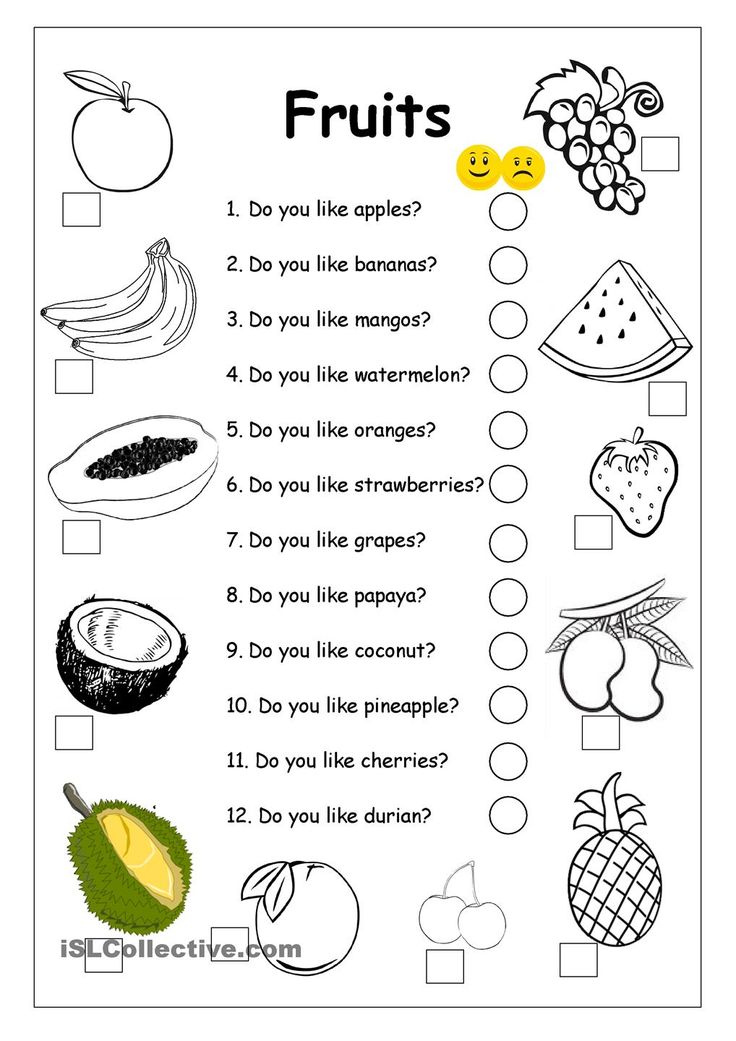
The first foods offered to a child at 6 months of age may be cereal, vegetable or fruit puree. nine0003
Regarding the introduction of vegetables and fruits, there are different opinions about what is better to give first: vegetables or fruits.
Vegetables or fruits?
Pediatricians often recommend starting your baby's introduction with mashed vegetables, because fruit is sweeter and some children may then refuse vegetables. In fact, it is very individual. An important argument in favor of vegetables is the fact that fruits are not the main meal and, therefore, they can be offered as a snack, dessert, or added to cereals and sour-milk products. nine0003
But vegetable puree is introduced into the baby's diet as a main dish, to which meat will be added later.
To get the most out of new foods, no matter what kind, introduce them to your baby in the right way.
How to choose fruits and vegetables for a baby?
For the first acquaintance, it is advisable to use the vegetables of our climatic zone: zucchini, cauliflower, broccoli, pumpkin, potatoes, squash. Give preference to seasonal vegetables. You need to start with one type of vegetable, and only after the child has received each of them separately, you can mix them. nine0003
Give preference to seasonal vegetables. You need to start with one type of vegetable, and only after the child has received each of them separately, you can mix them. nine0003
Pediatricians recommend apples, peaches, apricots, plums as the first fruits.
What is better to choose: mashed potatoes in jars or cook it yourself?
There is no unequivocal opinion on this issue either among doctors or mothers.
Many people find that homemade vegetable or fruit puree is healthier because it retains nutrients, vitamins and minerals better.
Another part of the experts argue that modern growing conditions do not guarantee the safety of fruits and vegetables for young children, as they may contain a large amount of nitrates or pesticides. nine0003
Unfortunately, if vegetables and fruits are not from your own garden and you do not know where and how they were grown and how they were processed, then it is better to give preference to children's vegetable or fruit puree from jars.
Preference is given to industrial purees even when the beginning of acquaintance with vegetables and fruits falls outside the season of vegetables and fruits. If winter and zucchini are only imported, and apples have been stored in vegetable stores for quite a long time, then they are unlikely to be safe for a small child. nine0003
According to modern requirements for baby food products, vegetables and fruits for baby foods of industrial production are grown in special raw materials zones without the use of chemical fertilizers and pesticides. Modern production technologies make it possible to preserve vitamins and minerals as much as possible and provide the necessary consistency, in accordance with the characteristics of the digestive system and chewing apparatus of the baby.
Industrial purees also allow you to choose your baby's favorite vegetable or fruit, regardless of the season. nine0003
If you have your own garden and grow organically, you can confidently prepare vegetable and fruit dishes at home.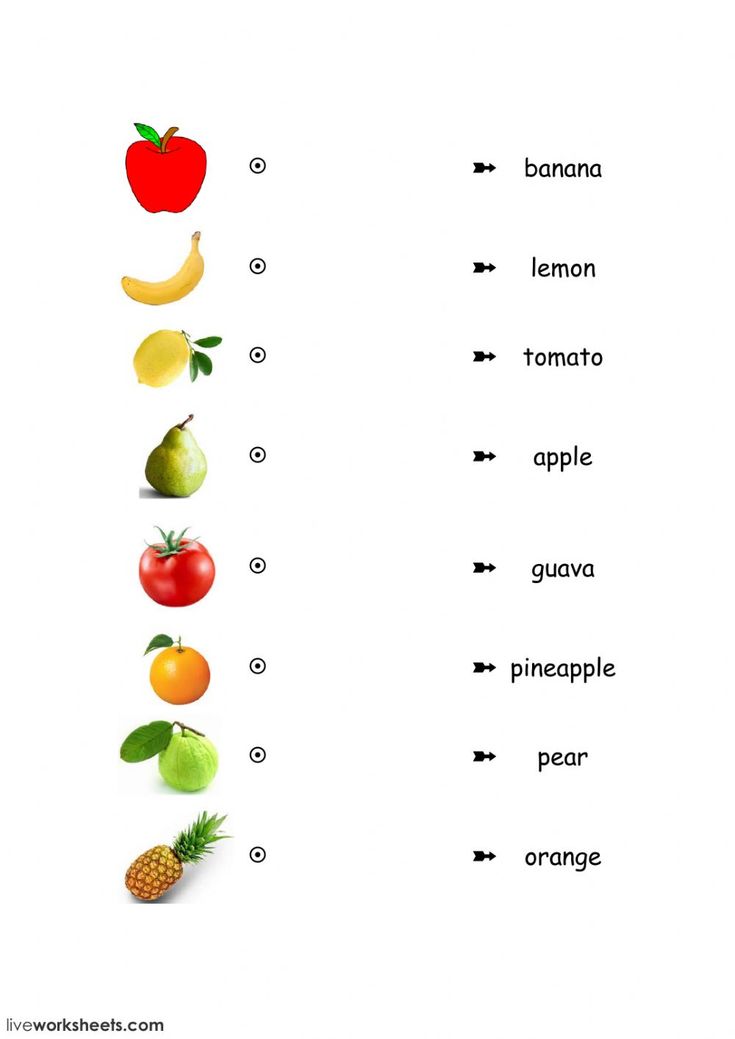
How to prepare vegetables and fruits for a baby at home?
When preparing vegetables and fruits, observe the following rules:
- select only good, undamaged, fresh vegetables and fruits
- Wash them thoroughly before cooking
- cook just before feeding your baby. nine0054
For a child of the first year of life, vegetables are boiled or cooked in a double boiler without salt and pepper. Grind with a blender or carefully grind to a homogeneous creamy consistency. If the puree is too thick, you can add a little vegetable broth in which the vegetables were boiled.
Vegetable puree is given warm, the optimum temperature of the puree for feeding is 37 - 38ºС.
Fruit can be given fresh or baked in the oven. But like vegetables, fruits should be chopped and peeled. nine0003
Fruit can be grated on a plastic grater or chopped in a blender. The grater or blender must be poured over with boiling water before preparing the puree!
When the child has 6-8 teeth, you can give a piece of fruit and he will eat it on his own.
Remember not to chase exotic fruits as they can cause an allergic reaction in your baby. Useful substances are better absorbed from fruits that are traditional for our climatic zone.
How many fruits and vegetables does a baby need?
A child can eat only a certain amount of vegetable and fruit puree per day in order to avoid indigestion. This amount depends on the age of the baby.
Approximate recommended daily intake of vegetable puree is
50-100g for a 6 month old baby, 150g for a 7 month old baby, 170-180g for a 8-9 month old baby, and from 10 to 12 months the amount of vegetable puree can be increased up to 200 g *. nine0003
Your pediatrician will help you determine the right amount of puree for your baby.
But, regardless of the age of the child, acquaintance with each new product should begin with no more than 1 teaspoon and gradually increase to the recommended age norm!
A child needs 2 times less fruit purees than vegetables.
Children at 6 months can consume 40-50g of fruit puree, at 7-8 months - 50-70g, at 9-12 months - 80-100g *. nine0003
What to combine vegetables and fruits with?
Vegetable and fruit purees are low-protein complementary foods, therefore they are given as an independent dish for no more than 2 weeks, then it is necessary to enrich them with high-protein foods.
Pediatricians recommend combining vegetable puree with meat supplements, thanks to which the baby will receive a rational, easily digestible lunch.
Fruit is good to combine with soft cheese, if it has already been introduced into the baby's diet, or added to milk or dairy-free cereals. nine0003
TM "Malyatko" offers different flavors of vegetable and fruit purees. Our purees are made from vegetables and fruits grown in our own fields in compliance with all the requirements of organic farming.
They are ready to use, so you will have more time to spend with your baby.
Malyatko - the basis of health for life!
*Clinical protocol for the care of a healthy child under 3 years of age
at what age to introduce with breastfeeding and artificial feeding, how to cook at home
When to introduce the first complementary foods
Today there are no hard and fast rules and deadlines for the introduction of complementary foods. Parents should first of all focus on the signs of the child's readiness for complementary foods. Here is what pediatrician, candidate of medical sciences Anna Levadnaya advises to pay attention to , the author of a blog about pediatrics and not only on Instagram.
The child holds his head confidently. nine0003
- Can sit with support, meaning it can be placed in a high chair or placed on an adult's lap.
- The kid shows an active interest in food: he is interested in food, he watches what adults eat.
- Breastfeeding or formula feeding is well organized and does not cause any problems.
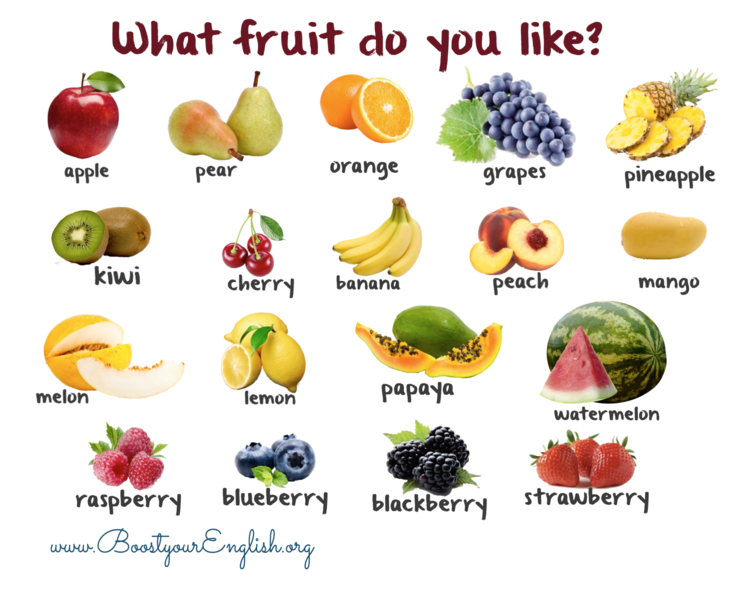
- The child can put his hand to his mouth, puts various objects in his mouth, such as toys. In this case, the baby chews or champs.
As a rule, all these signs appear in the period from 5.5 to 7.5 - 8 months, but most often around 6 months. All babies develop differently, and one baby may be ready to try his first puree or porridge as early as 5 months, and another at 6 or 7 months will refuse the new food you offer. nine0003
What complementary foods a child needs in the first months
And here again, there are no strict recommendations and rules. On the contrary, many experts agree that it doesn’t matter which dish you start complementary foods with, the most important thing is to provide the right nutritional interest. In this case, the child will eat all the foods that you offer him.
In Russia, it is customary to focus on the following complementary feeding scheme. The first to introduce cereals or vegetables, depending on the weight of the child. As a rule, vegetables are first, then cereals, then meat, then fruits, then cottage cheese. In some US states, for example, on the contrary, it is recommended to start complementary foods with meat. But the general message of the recommendations is to maximize the variety of tastes and textures in the first year of life. From vegetables in the first months, you can offer zucchini, cauliflower, broccoli, pumpkin, carrots, potatoes. Of the cereals, gluten-free are the first to be introduced: rice, buckwheat, corn. From fruits - apple, pear, banana, peach and others. From meat - it is better to start with a rabbit, turkey, chicken, veal. nine0003
As a rule, vegetables are first, then cereals, then meat, then fruits, then cottage cheese. In some US states, for example, on the contrary, it is recommended to start complementary foods with meat. But the general message of the recommendations is to maximize the variety of tastes and textures in the first year of life. From vegetables in the first months, you can offer zucchini, cauliflower, broccoli, pumpkin, carrots, potatoes. Of the cereals, gluten-free are the first to be introduced: rice, buckwheat, corn. From fruits - apple, pear, banana, peach and others. From meat - it is better to start with a rabbit, turkey, chicken, veal. nine0003
— At the very beginning, complementary foods should be puree-like, says Anna Levadnaya.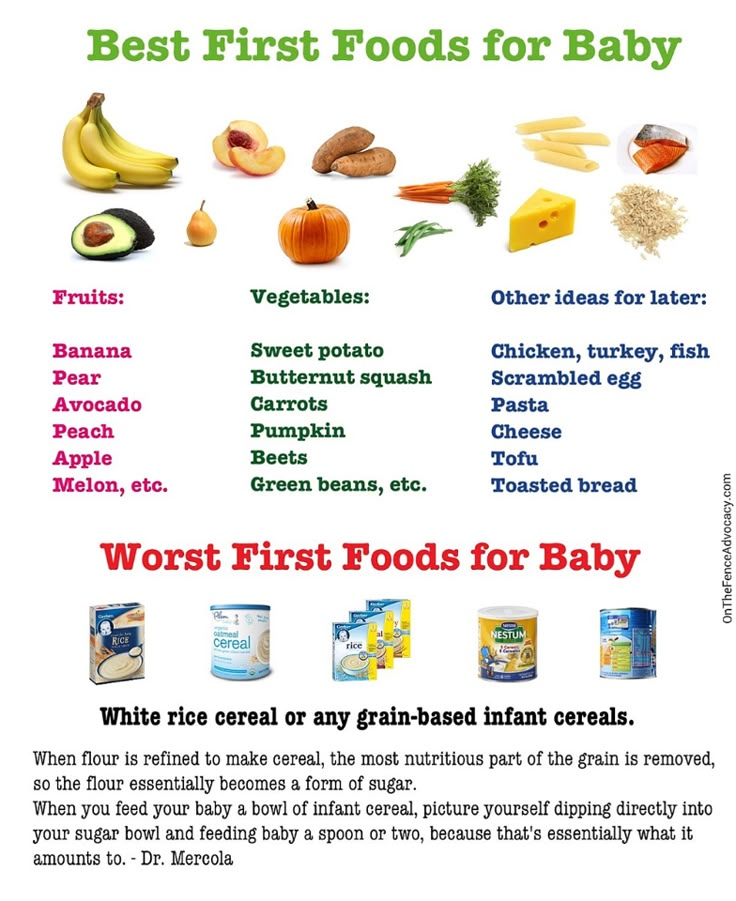 - It is better to give preference to monocomponent purees so that the baby learns to distinguish between different tastes. As you introduce vegetables and cereals, add butter and vegetable oils to them. If there are no problems with the introduction of complementary foods, it is recommended to use the maximum variety of food textures as early as possible. Starting from 7-8 months, the baby can and should be introduced to semi-solid foods. This is very important for the correct formation of food interest, and for the development of chewing skills, the correct functioning of the tongue, the development of speech, the “tweezer” grip, and the coordination of the work of hands, mouth and eyes. If you do not introduce semi-solid food in time, then there may be problems with the introduction of already solid food, and after a year the child will refuse it completely. Therefore, starting from 7-8 months, the baby can be offered mashed or pureed food, such as a banana. From 8-9months, give the so-called "finger" food: cut into pieces soft fruits and vegetables, such as boiled carrots, potatoes, and put in front of the baby.
- It is better to give preference to monocomponent purees so that the baby learns to distinguish between different tastes. As you introduce vegetables and cereals, add butter and vegetable oils to them. If there are no problems with the introduction of complementary foods, it is recommended to use the maximum variety of food textures as early as possible. Starting from 7-8 months, the baby can and should be introduced to semi-solid foods. This is very important for the correct formation of food interest, and for the development of chewing skills, the correct functioning of the tongue, the development of speech, the “tweezer” grip, and the coordination of the work of hands, mouth and eyes. If you do not introduce semi-solid food in time, then there may be problems with the introduction of already solid food, and after a year the child will refuse it completely. Therefore, starting from 7-8 months, the baby can be offered mashed or pureed food, such as a banana. From 8-9months, give the so-called "finger" food: cut into pieces soft fruits and vegetables, such as boiled carrots, potatoes, and put in front of the baby.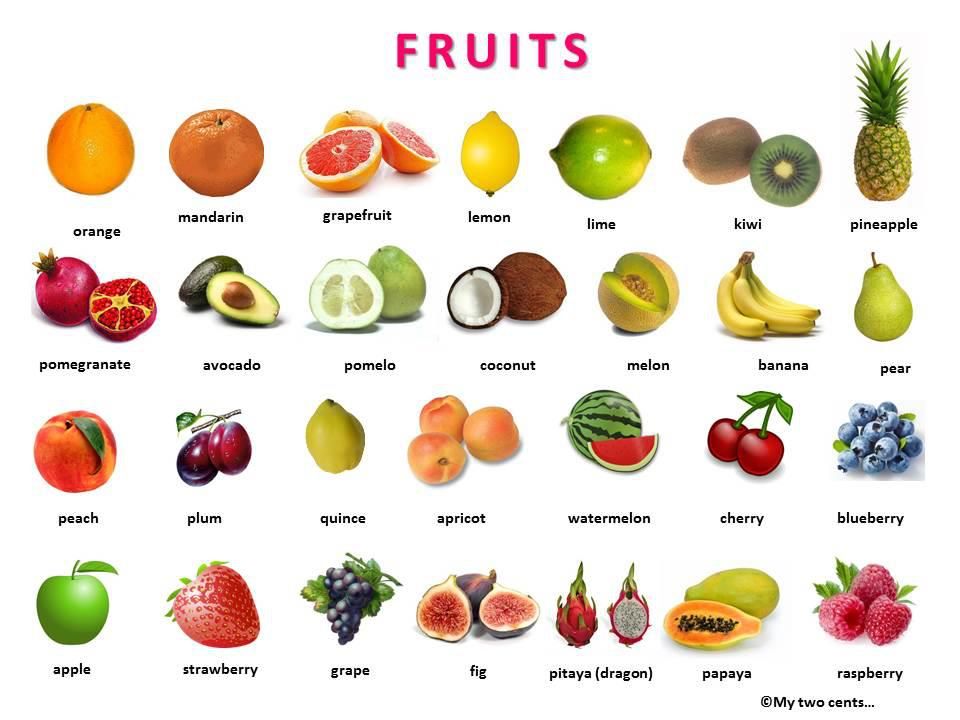 By one year, the child is ready to eat solid food from the common table.
By one year, the child is ready to eat solid food from the common table.
How to properly feed your baby
It used to be that complementary foods should be introduced very carefully and gradually, always in the morning, many parents still introduce each product over a week or two, very slowly increasing portions.
— These recommendations are relevant, perhaps, only for the very beginning of complementary feeding, the first two or three weeks, — notes Anna Levadnaya. - In general, in children without food allergies, the most rapid and varied expansion of the diet is recommended. That is, a new product can be safely introduced every 2-3 days. If you need to breed complementary foods, for example, baby cereals, then it is better to do this with breast milk or formula, and not with cow's. Whole milk is not recommended for children under one year of age. nine0003
Also with the introduction of complementary foods, offer your child water, either bottled for children or boiled. It is recommended to offer water from a cup so that the child learns to drink, and not from a drinking bowl, a bottle with a tube or a pacifier.
It is recommended to offer water from a cup so that the child learns to drink, and not from a drinking bowl, a bottle with a tube or a pacifier.
Monitor your child's well-being, in case of any changes that worry you, consult a doctor.
Complementary foods with natural and artificial feeding
Mothers often wonder if there are any differences in the introduction of complementary foods with natural and artificial feeding. In both cases, the recommendations are the same: it is recommended to focus on food interest, signs of the child's readiness for the introduction of complementary foods. Usually, as we have already noted, the baby receives only breast milk or an adapted milk formula up to 6 months. With exclusive breastfeeding, it is not recommended to supplement the baby with water, especially in the first month, when lactation is established. Bottle-fed babies can be offered water. nine0003
For both breastfeeding and artificial feeding, it is recommended to offer the baby a new food before feeding, and then supplement it with breast milk or formula.
— It is desirable to keep breast milk or formula in the diet of a child up to a year, — says Anna Levadnaya. - After a year, it is better to leave the bottle completely, gradually reducing the amount of the mixture. After a year, preferably closer to one and a half, cow's milk can be offered if the child is not allergic to its protein. Breastfeeding can be continued as long as it brings pleasure to mother and child. nine0003
How to prepare the first complementary foods
Give canned puree and baby cereals or cook it yourself? This question worries many mothers.
“In fact, there is no universal advice here,” says Anna Levadnaya. - Do what is comfortable and best for you. But when choosing food, remember that you must be confident in the products you buy. If you are not sure, buy canned purees, industrial baby cereals. The main advantage of any industrial baby food is that the products from which it is made are tested for the content of pesticides, heavy metals, nitrates and other harmful substances (labeled up to 3 years). If you're cooking yourself, cook with either seasonal fruits and vegetables or frozen ones. It is best to do it for a couple - this is how most vitamins and minerals are preserved. The advantage of homemade products is that we can provide the child with a different consistency, which is very important. But in any case, choose what is more convenient for you, more comfortable, including financially. The main principle is to provide the baby with a varied diet. Alternate between different foods. nine0003 Photo: pexels.com, Enrique Hoyos
If you're cooking yourself, cook with either seasonal fruits and vegetables or frozen ones. It is best to do it for a couple - this is how most vitamins and minerals are preserved. The advantage of homemade products is that we can provide the child with a different consistency, which is very important. But in any case, choose what is more convenient for you, more comfortable, including financially. The main principle is to provide the baby with a varied diet. Alternate between different foods. nine0003 Photo: pexels.com, Enrique Hoyos
If you decide to cook yourself, follow our tips on how to prepare puree and porridge for the first meal.
Vegetable puree
Zucchini, broccoli, cauliflower, carrots, pumpkin are suitable for the first feeding. The vegetable should be fresh, without dark spots. We clean it from the peel, boil or steam it. Then we pass through a blender. The vegetable should be quite soft to get the most uniform consistency (if necessary, you can add a little boiled water). If it did not work out, then additionally the mass can be rubbed through a fine sieve. nine0003
If it did not work out, then additionally the mass can be rubbed through a fine sieve. nine0003
Fruit puree
To prepare fruit puree for your baby, such as apple or pear puree, fruit must first be baked in the oven, then peeled and passed through a blender or sieve to obtain the most homogeneous consistency. Choose fresh, ripe, seasonal fruits.
Porridges
Soak cereals (for the first feeding, remember, this is rice, buckwheat, corn) for 4-5 hours in warm water. Then dry, for example, in a preheated oven. Next, grind the porridge in a coffee grinder into the consistency of flour and cook in water until cooked, this is about 5 minutes. For one tablespoon you need about 50-70 ml of water. nine0003
The main mistakes of parents
In fact, there is nothing complicated in the management of complementary foods. Use the guidelines, common sense, and have fun introducing your little one to new foods. With Anna Levadna, we have compiled a list of mistakes that parents often make when introducing complementary foods. Try to avoid them.
Try to avoid them.
In a hurry
It often happens that a child refuses the first complementary foods. Most often, this suggests that the baby is simply not ready for it yet. And the parents, by hook or by crook, are trying to feed him mashed potatoes or porridge. Under no circumstances should you force-feed your baby. It is worth postponing the introduction of complementary foods for one to two weeks. nine0003
Give mashed food from a bottle
This should not be done because the child must learn to eat liquid and solid food separately.
Salt or sugar is added
These components are not recommended to be introduced into complementary foods for a child under one year old, sugar is better up to three years.
Only the bottle is used too long
For example, in addition to formula, if the child is on IV, they give water, compote and other drinks from the bottle.











